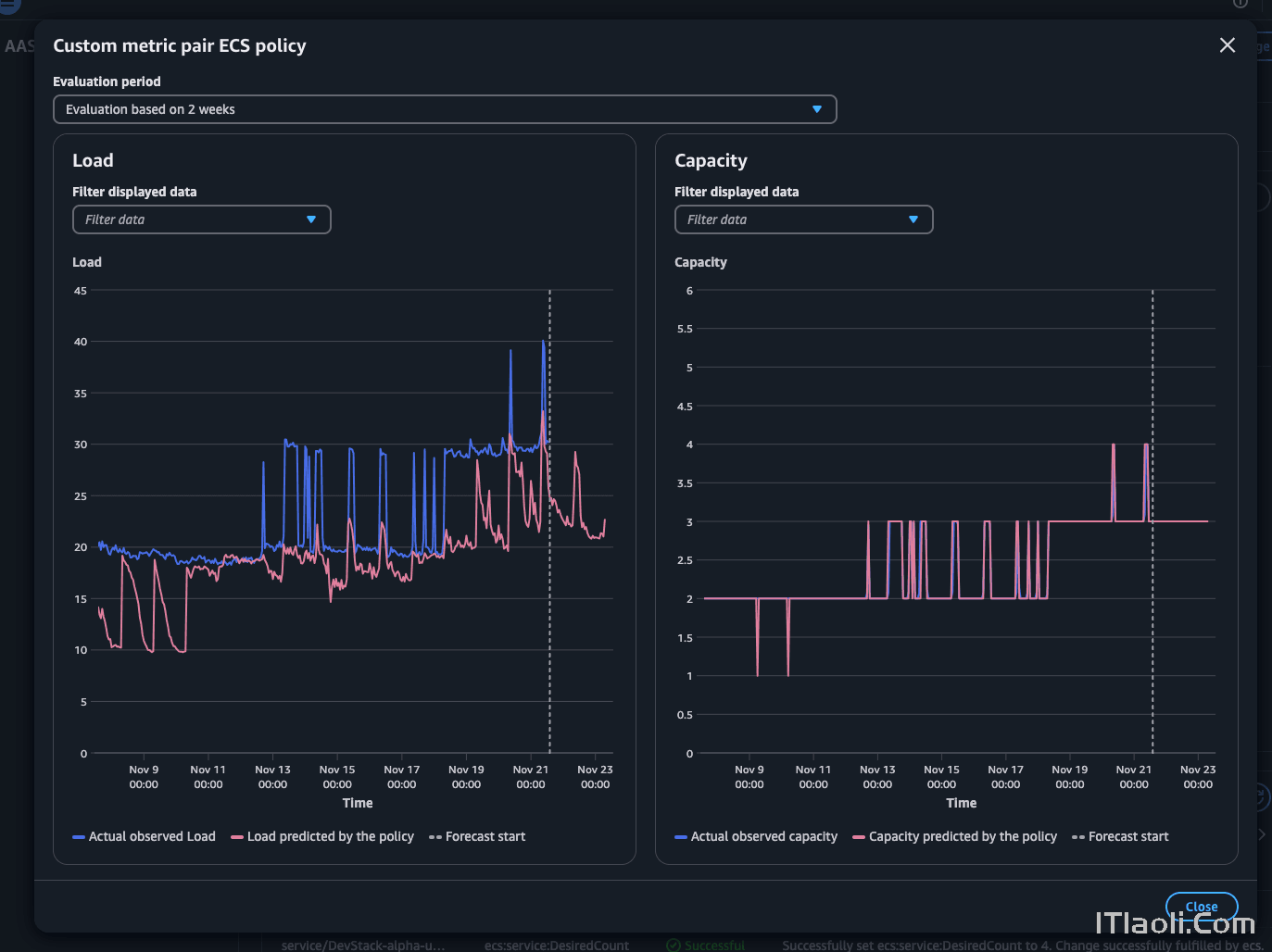Amazon Web Services (AWS) recently released Predictive Scaling for Amazon ECS, an advanced scaling policy that employs machine learning (ML) algorithms to anticipate demand surges, ensuring applications remain highly available and responsive while minimizing resource overprovisioning.
Amazon Elastic Container Service (Amazon ECS) is a container orchestration platform with seamless AWS integrations. It enables efficient deployment and management of containerized applications at scale. A critical feature for managing resources in Amazon ECS is Service Auto Scaling, which dynamically adjusts the number of tasks in a service to match fluctuating workloads. By leveraging Application Auto Scaling, users can implement target tracking or step scaling policies based on metrics such as CPU utilization, request rates, or custom parameters like queue depth. Scheduled scaling also enables predefined adjustments for recurring traffic patterns.
Amazon ECS Predictive Scaling complements existing scaling mechanisms, combining historical patterns with real-time metrics to optimize task counts. This proactive approach is particularly advantageous for workloads with consistent traffic fluctuations or those requiring extended initialization times. Predictive Scaling operates alongside reactive policies like target tracking, avoiding premature scale-ups and ensuring capacity meets both anticipated and immediate demand changes.
Predictive Scaling provides several benefits. It anticipates demand changes, allowing tasks to initialize before surges occur, thereby enhancing performance and reducing latency. The ML algorithms continuously analyze demand trends, refining forecasts for greater accuracy over time. Unlike scheduled scaling, which requires manual adjustments to accommodate evolving patterns, Predictive Scaling adapts automatically, reducing administrative overhead and improving scalability.
To illustrate, Predictive Scaling is ideal for applications with cyclical traffic, such as those experiencing spikes during business hours or bursts of activity tied to specific intervals. For workloads with significant initialization requirements, Predictive Scaling ensures readiness by scaling proactively, mitigating delays common with reactive scaling. Additionally, this feature acts as a safeguard against untimely scale-ups triggered by reactive policies based solely on real-time metrics, offering a robust solution for applications with complex startup dependencies.
Setting up Predictive Scaling begins with enabling Forecast Only mode, which generates capacity predictions without altering existing configurations. This mode allows users to validate forecasts in a live environment. Once confidence in the forecasts is established, transitioning to Forecast And Scale mode activates automated scaling decisions based on predicted demand. The configuration process involves selecting relevant metrics, such as CPU usage, and defining buffer times to preemptively scale out tasks. Forecasts rely on historical data, with accuracy improving as more data becomes available.
Predictive Scaling supports multiple policies, enabling comparisons across different metrics to determine the most effective configurations. Recommendations in the Amazon ECS console highlights the best-performing policies, helping users fine-tune their scaling strategies. The integration of Predictive Scaling with reactive policies ensures a comprehensive approach, combining baseline capacity adjustments with real-time scaling to meet demand fluctuations efficiently.
To implement Predictive Scaling, users must configure the feature via the Service Auto Scaling section in the Amazon ECS console. Permissions for accessing predictive scaling forecasts and recommendations are required, and additional insights can be gained through load and capacity charts that compare historical data with predictions. Scaling activities are logged, providing transparency into policy performance and decision-making processes.

Predictive autoscaling is a feature available in both Microsoft Azure and Google Cloud Platform (GCP). In Azure, predictive autoscaling is integrated into Virtual Machine Scale Sets. It analyzes historical usage patterns and predicts future needs, proactively scaling resources up or down to ensure optimal performance and cost-efficiency. In GCP, the feature is part of Cloud Managed Instance Groups (MIGs), leveraging historical load data and forecasting models to automatically adjust instance numbers before demand peaks or troughs occur.
Predictive autoscaling is a feature that allows users to enhance application reliability and cost management by anticipating workload changes and dynamically adapting resources in advance, reducing manual configurations, latency, and avoiding over-provisioning.

